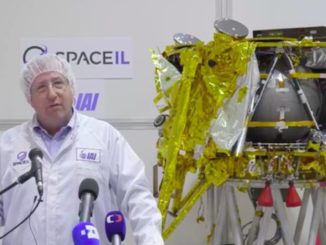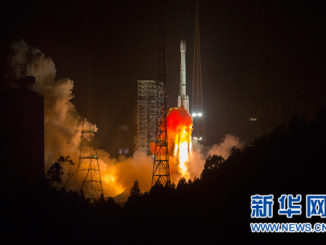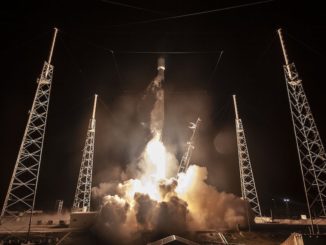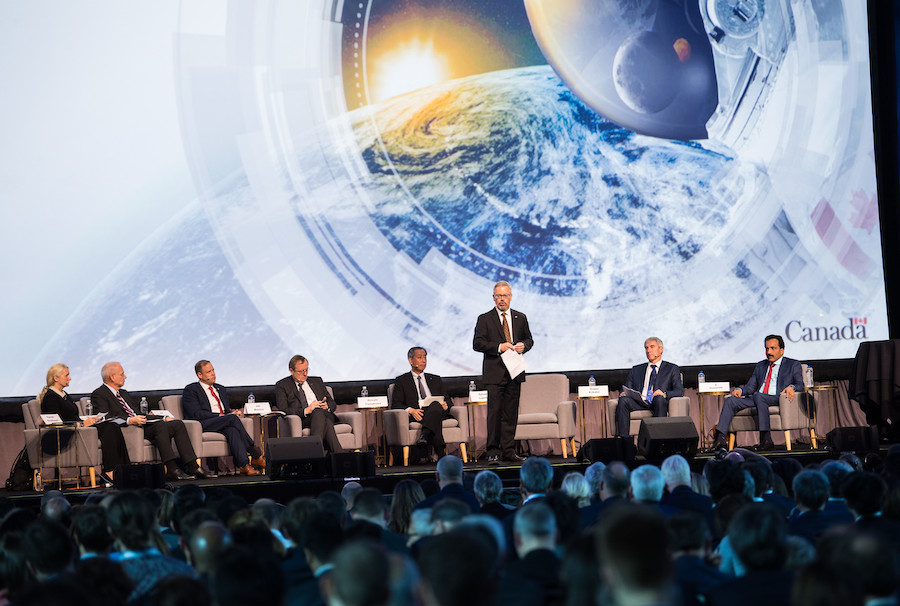
While Congress considers whether to provide funding NASA says it needs for a moon landing with astronauts before the end of 2024, several international partners voiced their intentions Monday to participate in the U.S.-led lunar exploration program.
Two of NASA’s partners on the International Space Station program — Canada and Japan — have signaled their plans to collaborate on the Artemis moon program. The European Space Agency will seek approval from its member states later this year to participate in the lunar exploration initiative, and a senior official from Russia’s space agency said Monday the Russian government is still sorting out how it might support the moon program.
Opportunities for international cooperation on NASA’s Artemis moon program was a major topic Monday, the opening day of the 70th International Astronautical Congress in Washington.
“There’s a lot of interest,” said Jim Bridenstine, NASA’s administrator. “During the course of this week here at the International Astronautical Congress, I think you’re going to see a lot of announcements regarding different companies and organizations that are interested in going to the surface of the moon.”
Japanese Prime Minister Shinzō Abe announced Friday that his government has decided it will contribute to NASA’s moon program.
“At long last, Japan too will turn over a new page leading to lunar and space exploration,” Abe said in a statement. “Today, we decided on a policy of participating in the U.S’s challenging new venture, as an ally connected to the U.S. by strong bonds.”
Abe announced the decision after a meeting of Japan’s Strategic Headquarters for National Space Policy, during which officials confirmed Japan’s participation in the U.S.-led lunar program.
“The program aims at maintaining a space station orbiting the moon, manned exploration of the lunar surface, and other undertakings, and Mars and other destinations are also in our sights,” Abe said.
The space station in lunar orbit, known as the Gateway, will serve as a waypoint, staging base and safe haven for astronauts heading to the lunar surface. By 2024, NASA hopes the Gateway’s core power and propulsion module and a habitation compartment will be in lunar orbit, and a human-rated lander will be robotically assembled on one of the station’s docking ports.
Astronauts inside an Orion spacecraft launched aboard NASA’s Space Launch System heavy-lift rocket will link up with the Gateway and ride to the moon’s surface inside the lander. An ascent module on the lander will carry the crew back to the Gateway for transfer back into the Orion capsule, which will ferry the astronauts back to Earth.
Japanese officials have expressed interest in providing logistics services to the Gateway with the country’s next-generation HTV-X cargo freighter, which will launch on Japan’s new H3 rocket set to debut late next year. Bridenstine said Japan plans to supply a habitation module for the Gateway outpost.
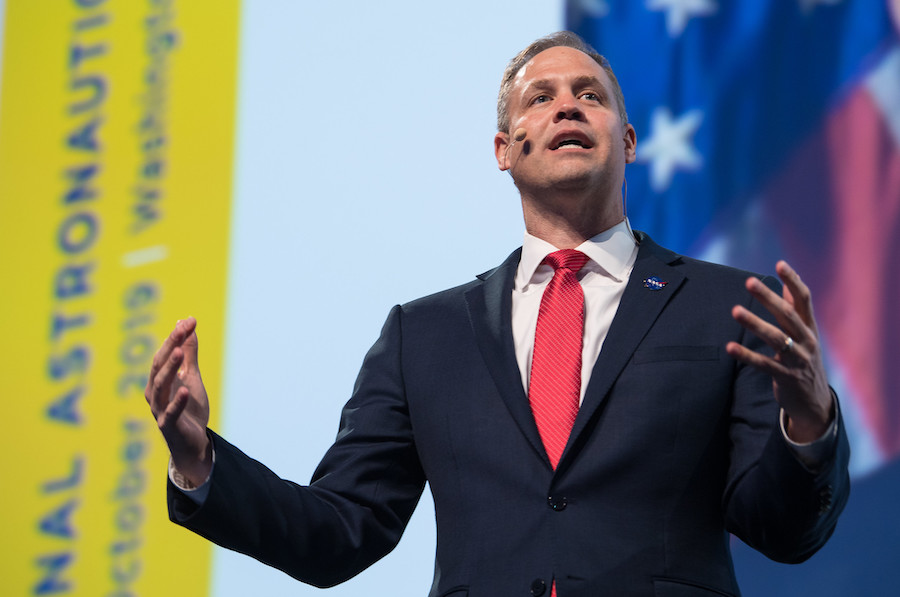
“The Gateway is international in nature,” Bridenstine said Monday. “Thank you to Japan for stepping up to the plate. Japan has announced that they want to be a big part of the Gateway with an international habitation module. We are very hopeful that the European Space Agency will be joining us on the Gateway as well.”
Japan may also cooperate on other lunar transportation activities, and offer support in lunar surface exploration, which could lead to a Japanese astronaut on a moon landing mission.
“JAXA would like to send a Japanese astronaut to the surface of the moon,” said Hiroshi Yamakawa, president of the Japan Aerospace Exploration Agency, during a press conference Monday in Washington.
Bridenstine said he expects the presence of international astronauts on lunar landing missions will be a point of discussion during negotiations about what other governments might contribute to the Artemis program.
“We want to see astronauts on the surface of the moon from all the nations,” Bridenstine said. “That’s the goal. As we move forward, we’re going to need as much international support as possible.”
Japan is the second international partner to commit to support NASA’s lunar exploration program.
Canadian Prime Minister Justin Trudeau announced in February that his government backs the development of a new robotic arm, named Canadarm 3, to fly on the Gateway station in orbit around the moon.
“We were the first international partner to commit to the Gateway,” said Sylvain Laporte, president of the Canadian Space Agency. “So we’re very proud of that historical moment.
“Canadarm 3, in order for it to be as automatous as possible, will have state of the art artificial intelligence to make sure that we can benefit from every moment that the arm is out there on Gateway,” Laporte said Monday.
The European Space Agency will seek funding from member states later this year for a contribution to the Gateway. A meeting of European government ministers representing ESA’s 22 member states is scheduled for November in Seville, Spain.
At the ministerial conference, ESA leaders will request a budget for a range of projects, including an exploration funding package to pay for Europe’s continued participation in the International Space Station program, the construction of additional European services modules for NASA’s Orion crew capsule, and development of components for the Gateway.
A major planned ESA contribution to the Gateway, assuming the approval of funding, is the ESPRIT module designed for in-space refueling and telecommunications relay functions.
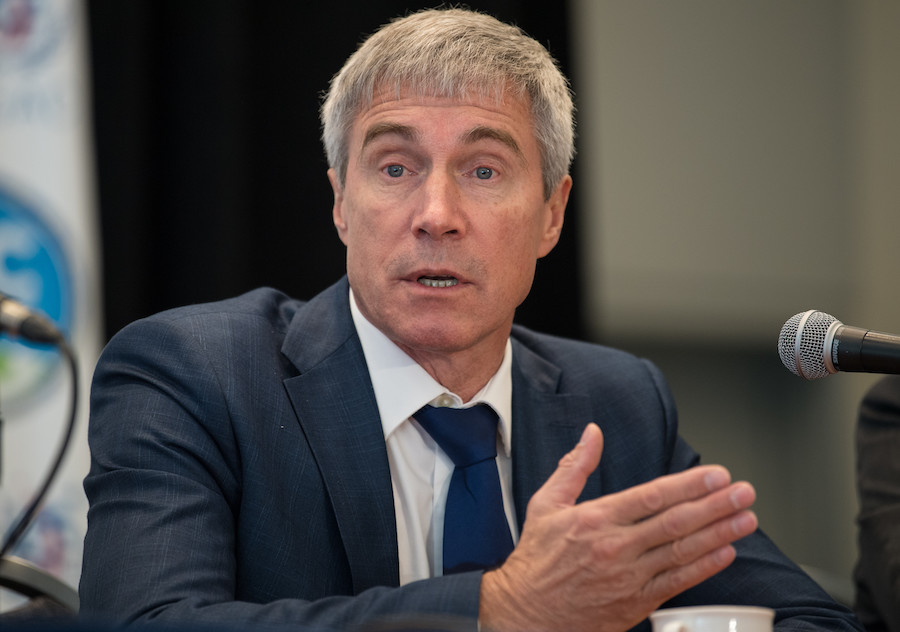
Sergey Krikalev, a veteran cosmonaut who represented the Russian space agency at Monday’s opening of the International Astronautical Congress, said he expects Russia will be a Gateway partner.
“We are planning to participate in Gateway,” Krikalev said. “We don’t have a final decision how and which way, but for sure what we’ve said before is international cooperation is important. It’s important for Russia to stay together with our partners.”
Aligning Russia’s national goals with the international lunar exploration architecture will require more work, according to Krikalev.
“Of course, we will develop our own national program,” Krikalev said. “The problem now is this program needs adjusted … So we need to clarify what we are going to do with the Russian program, and see how this program will be joined together with the Gateway program.”
Russia is planning to develop a new crew vehicle named Orel designed to carry humans into deep space. If launched, it would be Russia’s first spacecraft to ferry crews beyond low Earth orbit.
Krikalev said the Federation spacecraft would be used for crew and cargo transportation to the Gateway, offering a backup in case of a problem with the Space Launch System rocket or the Orion crew vehicle.
In a press conference Monday, Krikalev said Russia may also build and launch a module for the Gateway itself.
“From the very beginning, we said that our primary goal was the surface,” Krikalev said. “That’s why we were late joining the Gateway program, because we were trying to optimize what is the best trajectory to fly. Actually, there are advantages and disadvantages of the Gateway’s trajectory, but overall, we said that the most efficient way would be to work together.
“We think the redundant transportation systems and one of the modules of the Gateway will be our participation in the program, and the way and how we will do this, we will decide this later,” he said.
Vice President Mike Pence challenged NASA in March to accelerate the agency’s schedule for a human landing on the moon to 2024, four years earlier than the previous 2028 goal. That changed NASA’s plans for assembling the Gateway, prompting U.S. officials to focus on a minimum capability Gateway that could be built with U.S. modules in time for a 2024 landing attempt.
The international contributions to the orbiting lunar station are expected to come after the potential landing attempt in 2024.
Pence also spoke Monday at the opening of the International Astronautical Congress, calling on “like-minded, freedom-loving nations” to partner with NASA on space exploration programs.
“As more nations gain the ability to explore space and develop places beyond the Earth’s atmosphere, we must also ensure that we carry into space our shared commitment to freedom, the rule of law and private property,” Pence said.
Bridenstine cast a wide net for prospective partners during his remarks Monday.
“When we go to the moon, we want to take all the partners on the International Space Station, and we want to grow it,” Bridenstine said.
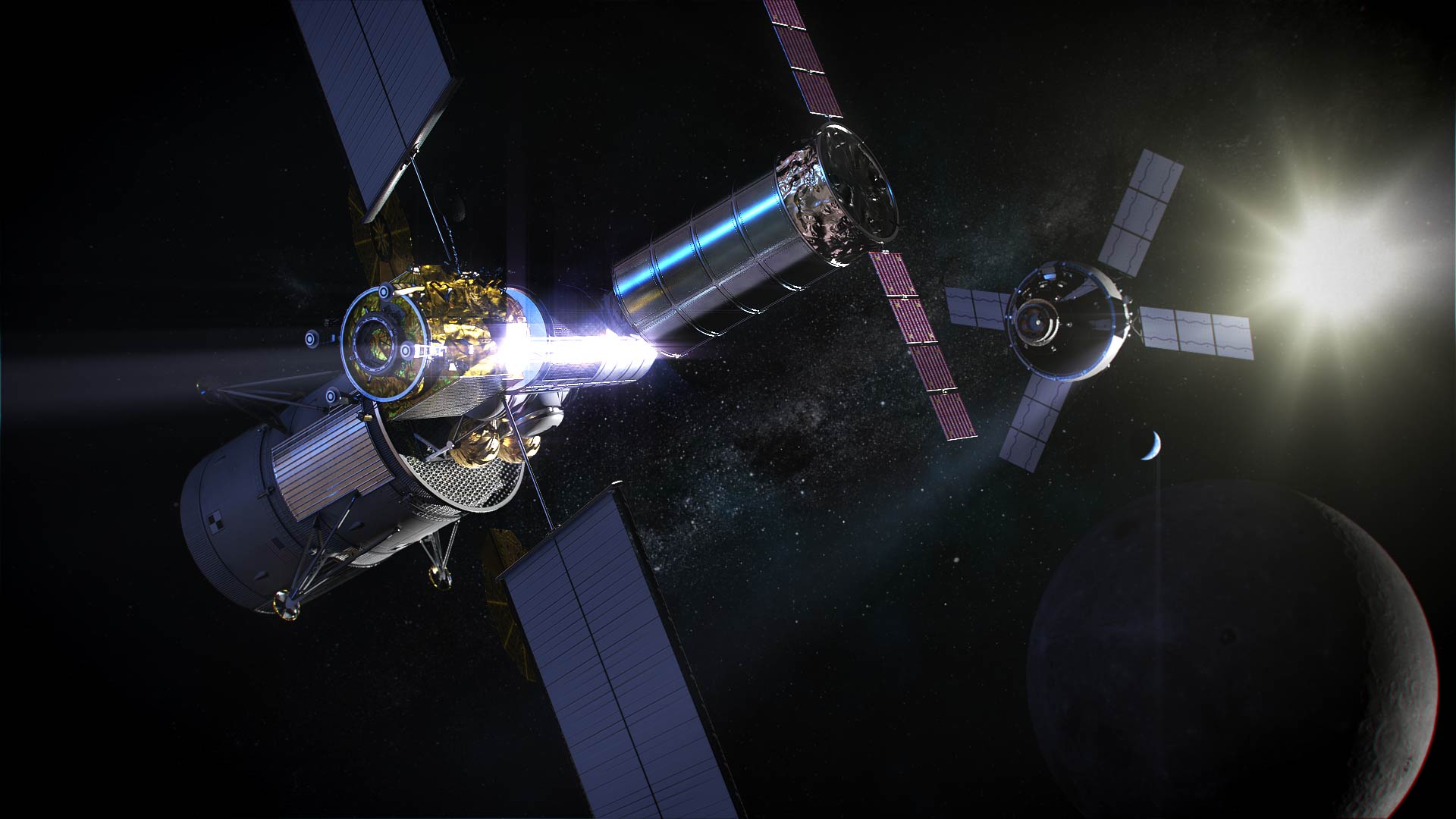
NASA is prohibited by law from bilateral cooperation with China in space exploration, but other space agencies, including ESA, are pursuing broad collaboration with China’s space programs.
Wu Yanhua, the deputy head of the China National Space Administration, planned to attend the International Astronautical Congress. But he was not on the heads of agencies panel Monday as scheduled, an absence widely noted at the conference.
Pascale Ehrenfreund, head of the German space agency and a moderator during the heads of agencies panel, blamed Wu’s absence on a “time conflict.”
Russian and Chinese officials have been forced to skip some international space conferences in recent years due to difficulties obtaining visas. Dmitry Rogozin, head of Roscosmos, is subject to U.S. sanctions levied after Russia’s annexation of Crimea in 2014, and was represented by Krikalev for Monday’s opening of the International Astronautical Congress.
While international support appears to be building for NASA’s moon program, Congress has not approved a budget to pay for the Trump administration’s plan to accelerate the timeline for the next crewed lunar landing from 2028 to 2024.
The White House submitted a proposed budget amendment to Congress in May requesting an extra $1.6 billion as a down payment for the fast-track lunar program, on top of NASA’s already-planned budget. NASA says it needs about $1 billion of that figure to kick-start development of human-rated lunar landers, a project the space agency plans to outsource to commercial industry.
A budget bill passed by the House of Representatives in June did not include any of the extra funding for NASA’s Artemis program. Members of a House appropriations subcommittee said in a hearing last week they wanted to see a detailed budget profile for the 2024 moon landing before approving any additional funds for the effort.
An appropriations bill approved by the Senate Appropriations Committee last month proposed $744 million for development of human-rated lunar landers, $256 million short of what NASA said it needed just for the landing system.
Email the author.
Follow Stephen Clark on Twitter: @StephenClark1.

